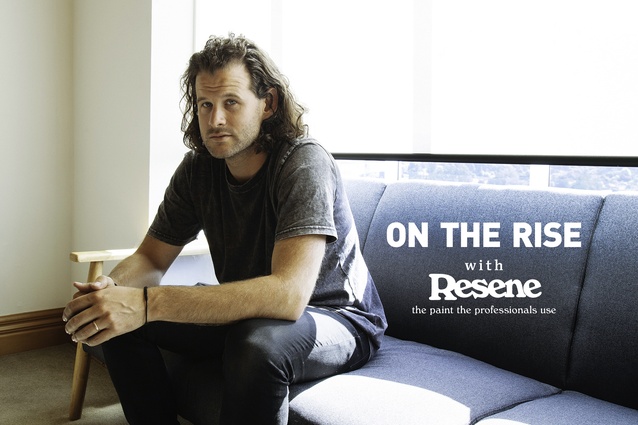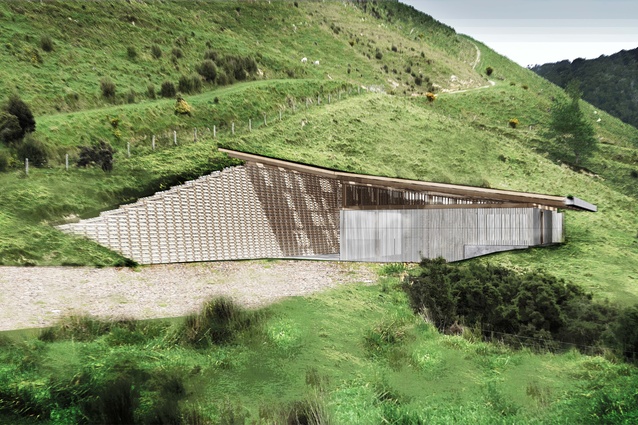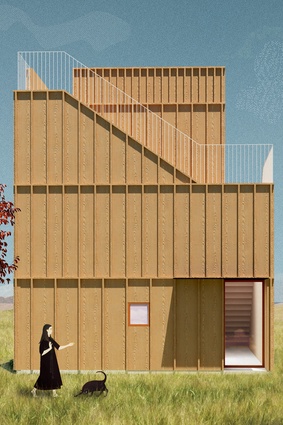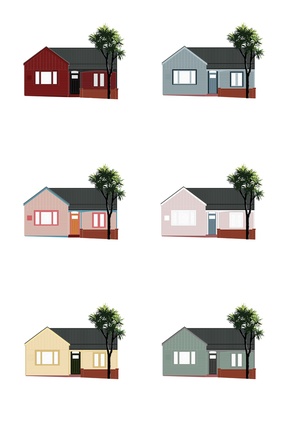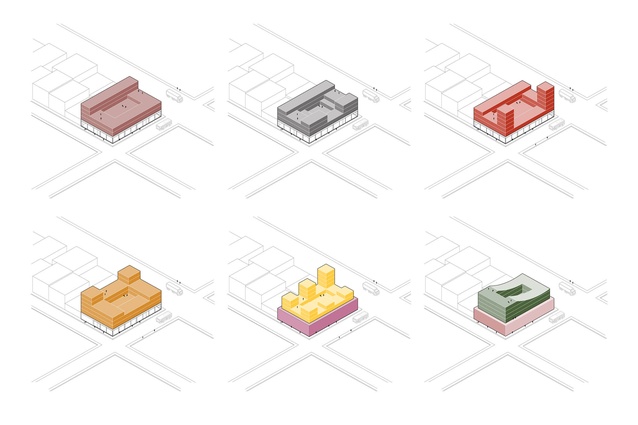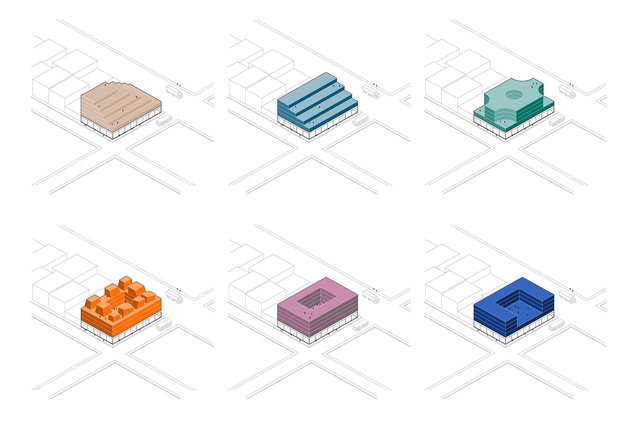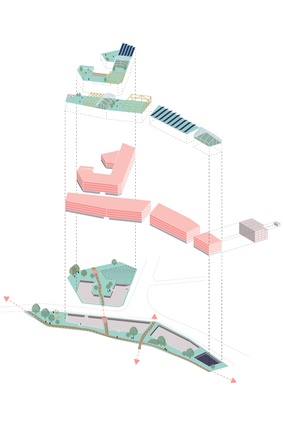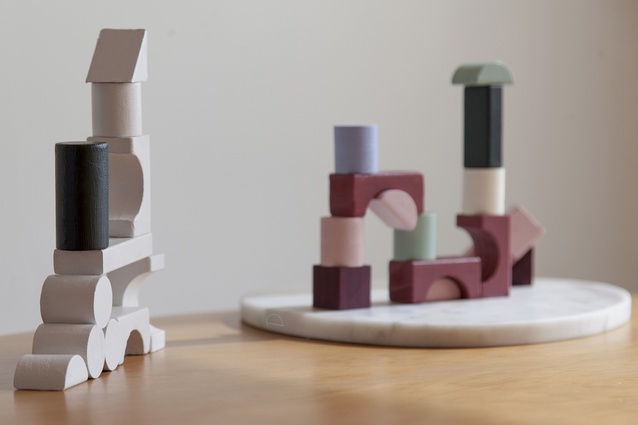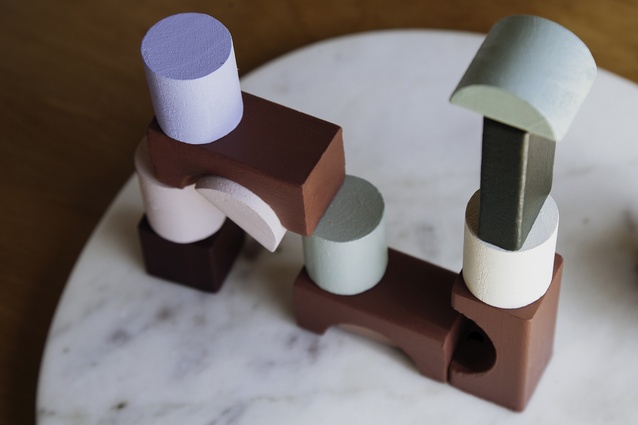On the Rise: Campbell McNeill
ArchitectureNow’s On the Rise series, supported by Resene, profiles young designers from around the country who are making waves in the industry. This month, we speak to a Dundedin-born designer whose experience spans from grassroots projects to multinational firms. He talks about pushing the boundaries of traditional architecture practice, starting his own company in Dunedin and the platform he started with four other graduates, AHHA.
Ashley Cusick (AC): How did you first become interested in architecture as a career?
Campbell McNeill (CM): It’s not the most inspiring story, but I was at high school, and it didn’t really suit me. So, I tried to find a way to move on from high school early, which led me to drafting at Otago Polytechnic. I had a plan to move up to Wellington and continue studying architecture at Victoria University when I came out of drafting, but they didn’t offer me any cross credit, so I decided that I’d postpone for a year. I ended up working at an architectural engineering firm as a draftsperson in Auckland. It was a really supportive place to start at, and I honed some of my technical delivery skills. They also supported me as I went back to study, and that’s why I ended up going to Unitec.
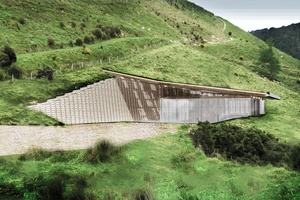
I was kind of taking a punt and didn’t know what I was getting myself into, so I was fortunate that I like architecture and want to continue with it.
AC: What was it like going from the practical training of drafting into more theoretical study in architecture school? Because, I think students can often come out of university not feeling prepared for the actual business of making architecture.
CM: Initially, I thought it was going to be really helpful. As I learned more about the broader ideas of architecture, I actually thought it might get in the way of me doing interesting things. But, on reflection, I think it’s only been a good thing.
This relationship between the draftsperson and the architect, or the technical architect and the design architect, has been a bit weird in the past. It can be this kind-of hierarchical structure. But, design and architecture can be taken in so many different ways, and it’s important to respect those different roles just as you would respect an engineer or any other consultant. I think, if the relationship between technical or delivery architect and the design became more collaborative, maybe the educational sector would respond to that as well. And, maybe people coming out of their studies would feel more confident about their position. But, you’re not supposed to know everything either; there’s a role that industry has to play in educating people on the job.
AC: You seemed to have diverse work experience here in New Zealand in the years following your university education as well.
CM: I worked all through my education, really. I started working at Glamuzina Paterson Architects towards the end of writing my thesis, and it was really great working with Dom [Glamuzina] and Aaron [Paterson]. They split into Glamuzina Architects and Paterson Architecture Collective while I was with them. Tony, my business partner here in Dunedin, was also there at the time and we both went with Dom after the split. In the midst of working there, I did a little stint in Venice on the New Zealand pavilion too.
I’ve always been interested in the relationship between academia and practice. I’m never satisfied fully being in academia and never satisfied fully being in practice. Being in both means that I can bridge that realm and think about things a little differently, hopefully. Scale is an interesting thing for me as well; I like working across a lot of different scales.
AC: You continued this type of contracting, or freelancing, work as you travelled through Europe as well – often working projects at multiple firms at once. Are you particularly drawn to that way of working?
CM: It’s an interesting question, because I think the architectural industry, particularly in New Zealand, doesn’t have a very established relationship with the idea of freelancing or the “gig economy” or whatever you want to call it. Even as a freelancer, you often end up being just a part of the furniture at the firm anyway, but you have a different kind of contractual and financial relationship. However, your mindset shifts because all of a sudden, everything comes down to the hour. You feel obliged to restrict that hour quite a lot, I think.

AC: Does that seem to lead to a better work/life balance, do you think?
CM: I mean, there were days that I worked a lot. I don’t know if it changes that side of it that much. My whole family seems to be very entrepreneurial and have this itch to be either self-employed or just in a position where they’re creating something new. Me being in those freelancing positions, I’ve always had this sense of being a little bit more loose or self determining. And, maybe, it’s made me want to be a bit more critical about how I contribute to a team, which, I think, is a good mindset.
AC: You’re also part of a platform with a few other graduates called AHHA. Tell us more about it.
CM: It actually ties in well to the freelancing conversation, because we all have that kind of role at AHHA. It’s not really a design firm. It’s a collective. I think it’s quite important to make that distinction because we’re all doing other things as well. Raphaela [Rose] is at RTA Studio. Jimmi [O’Toole] has his own company in Auckland called People People. Tony [Calder] and I have a practice here called .everyday and Melissa [Harrison] is in Berlin but doing her PhD from Athens University. Those are all our, for want of a better word, everyday endeavours, but we all contribute to the AHHA platform – kind of like freelance consultants. Maintaining that flexibility and the mentality of plugging in when we need to means that we can make sure that purity of the platform is maintained and the integrity of it.
AC: And how did it come about?
CM: The reason we came together was because we were all working for practices where the scope wasn’t broad enough for us to achieve what we were trying to achieve, or what we thought we could achieve from the work that we did. Even the perceptions around what architecture is or how it’s practiced felt a little too rigid in terms of branching out and taking on alternate parts of work. Through AHHA, we can say, let’s not worry as much about the step-by-step practising of architecture – pre design, concept design, develop design and so on. We were more interested in asking, what is it that we need to do to get a project off the ground? Do we need to understand the community and what they need? Or do we need to understand a business or a client in a different way so that we can present alternative investment opportunities, which then will probably affect the spatial outcome? And, hopefully, because we’re at those front-end conversations where there’s more strategic thinking, we can benefit the outcome a lot more.

That’s why it’s not a design studio. It’s much more like a collective; it’s more collaborative, more strategic. and it’s not about us as individuals. The five of us started it, but – I think we’d all agree on this – it would be nice if it starts to expand and take on other like-minded people that have an agenda for the environment and society. Tony and I talk about AHHA being a slightly mythical beast, because that detaches the individuals from it. It becomes this thing that holds all these values and this agenda, and we just try to propel it and push it along.
But, our thinking immediately became more strategic once we started working together. We all had similar visions and frustrations around wanting to not just build projects for the one per cent, which sounds kind of cliche, but it’s the truth. We want to make sure that what we’re doing is responding to a broader audience.
AC: You spent quite a bit of time working in London for various firms of different sizes and philosophies from Grimshaw to smaller, more experimental practices like IF_DO. Is there anything those experiences taught you that you’ve brought back with you to your practice here in New Zealand?
CM: I didn’t feel like practice was much different there. Projects are a lot more urban, without a doubt, but that’s the nature of the context of working in London. A lot of New Zealand is not urban and that kind of larger work is often taken by the big firms. I think we need to foster a better environment for firms to expand past the bach. Maybe the smaller practices aren’t thinking about how they’re positioning themselves, or maybe they’re just happy with residential work. But, I feel like there’s not really a culture around enabling either new practices or small practices to have their hand at larger work.
It’s hard to determine whether my time overseas in practice has affected my time here because the whole time I was thinking about AHHA and different ways of working. We’re all thinking about this crisis around accomodation and how we respond to that. And, it was when I was in London that we at AHHA started looking at things like alternative housing models and community land trusts. And through my networks I started to get to know more about Baugruppen models in Germany other co-housing typologies. Being in the UK and Europe meant we were able to get exposed to these models directly.
AC: You came back to Dunedin and you set up your own practice called .everyday. What led to that decision and what are you working on?
CM: Originally I thought I would come back and set myself up as a contractor and just see what I could do. But, it just so happened that Tony was moving back from Amsterdam at the same time, so we just said, well let’s do it together because it would be stupid not to. We’ve worked together before and we get on well, so it was quite easy for us to make decisions around what we were trying to achieve and how it was different than the work we were doing with AHHA.
.everyday is more like a classic design studio, as opposed to the platform of AHHA. And, we’re really keen to see how it goes in Dunedin, because there’s so much potential work here and there’s a lot of hype around Dunedin at the moment. As a result, some larger firms from outside the community are trying to come in. We thought it could be quite strategic for us as a small practice that has a design strength to position ourselves here and use the relationships we built when we were working in Auckland. So, we’re looking at doing joint ventures on larger work. By teaming up, we can be that local practice that can offer a response to local issues.
We both wanted to distil down what it is that we like. That’s why we called ourselves .everyday. Initially it was about how we have AHHA and we have something for our everyday work. But, if you delve into it more, we’re interested in the nuances of everyday life and how we impact that, whether it be on an urban scale or in the domestic realm. That, to us, is really interesting because we ask how we respond to those nuances of an individual in their home or a community within their neighbourhood. How do we question those nuances more? Or foster them and grow them? So, we’re really keen to help build on the great bones that Dunedin has. It’s got a really good compact city that just needs some more people living here centrally. There is so much potential, and now is a great time to be getting involved.

AC: I think a lot of young designers have this dream of going out on their own and setting up their own firm. What has that experience been like for you? What challenges have you faced?
CM: You always have the fear of not having enough work. There are some things that we’re doing that are about finding work in different ways. Rather than a client coming to us and commissioning something, we’re exploring if there is something we can do or make and then sell that product to people who might be interested?
When we first started, we were doing things like documenting some beautiful buildings in Dunedin. By imagining them with a new, contemporary aesthetic as a drawing, we were hoping that it would help us get to know some more people in the city while also reframing the city for others to see. This has the added benefit of getting in front of people.
Tony and I also contribute at Otago Polytechnic as contract lecturers, which helps with things like connecting with the broader industry. In addition, we are working on some projects with Dunedin City Council’s creative department, Ara Toi. We’re trying to spread the way we practice with things like that. Then it’s not always about production, it’s contributing to something bigger. It’s not always about us, but there are benefits, even from a networking perspective.
AC: What has lecturing at the university added to your professional life?
CM: Both Tony and I took on a first-year design paper and a sustainability paper at Polytechnic; we co-taught everything. It’s really important to both of us to be involved in the course. It’s this balance between academia and practice. The opportunities for research, or even delivering projects that might have a more holistic, or broader, agenda, tend to sit within the academic realm much more. So, we’ve made more connections through it that might lead to work.
Teaching in first year, it’s all elemental stuff. It’s all about trying to expose things to students and introducing an understanding of what architecture could be. So, because of that, you develop your own language, and that means you can talk to a broader audience when it comes to your practice. You can kind of curate that language and use it to speak to people who might not understand what you’re talking about. I think that’s really important, because practice, or professionalism, is really all about communication and how to communicate the delivery of a design.
AC: How has your approach to design evolved with all these varying experiences: across fields, across countries, across scales?
CM: All of them have influenced me in different ways, maybe some subliminally. I guess I’ve always been interested in how different practices approach work or even engage with clients. Working in multiple organisations, particularly the larger ones, I’ve learned a lot about how they project design to the world. My time at Glamuzina was also really informative to my design process.
But, reading and writing and studying and teaching – all those things help my criticality around design a lot. Breadth is really interesting to me. I look at all the work we’re doing with AHHA and Everyday and it’s really satisfying. We’re exploring such a wide scope of things at the moment. I don’t like being boxed into a corner – not that anyone else is doing it to me, but I can do it to myself. I’m just an opportunist. I look at something and I think, yeah, let’s do it. I love saying yes to things. I like to meet people and know what they’re doing and maybe see how I can help.
AC: As part of the On the Rise series, we ask designers to create a mood board using Resene colours. Tell us what inspired your project and the colour choice.
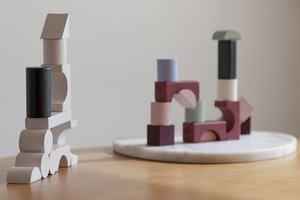
CM: I’m interested in subverting our common perceptions of everyday artefacts or space. Paint, or specifically colour, is often a prominent player in the common anthropological record. As a start to this exploration I began looking at the top 20 colours of the year for Resene which are, year after year, types of white and a couple of black variations.
The colour study takes on Elly Ward’s investigations into the ‘Greengrocers Order’ as a departure point, where a selection of fruit is composed into a glorious current day take on Vitruvian Orders. A part of the work by Ward is a commentary on Modernism and it’s petrification of colour. Here, I have chosen to offset the most popular Resene colour, Black White, with a selection of colours that share a boldness with some of Ricardo Bofill’s work. In his work, shape and form is used alongside colour to create a strong presence, contrasting his buildings from their environments while also avoiding a jarring relationship – a quality which sometimes can turn people off colour.
Painting children’s blocks, which are commonly a range of ecstatic colours, the study aims to draw attention to how our colour taste tends to mute as we age, defaulting to whites and neutrals. Maybe colour is too scary or too hard to get right. The composition is a question: do we want more than Black White on the record?
Catch up with the others in the On the Rise series here.

